Imagine waking up in a room that instantly calms your mind and energizes your soul—sounds dreamy, right? Minimal bedroom design ideas have skyrocketed in popularity because they offer a simple yet stylish way to create a peaceful sanctuary. With clean lines, clutter-free spaces, and soothing color palettes, these designs make your bedroom not just beautiful but also a haven for relaxation and rejuvenation.
In this article, you’ll discover a variety of inspiring minimal bedroom ideas that cater to different tastes and spaces. Whether you’re drawn to sleek modern aesthetics, cozy Scandinavian vibes, or subtle earthy tones, there’s something here for everyone. Get ready to transform your bedroom into a serene retreat with these creative, easy-to-implement ideas!
1. Minimalist Bedding with Textural Variations
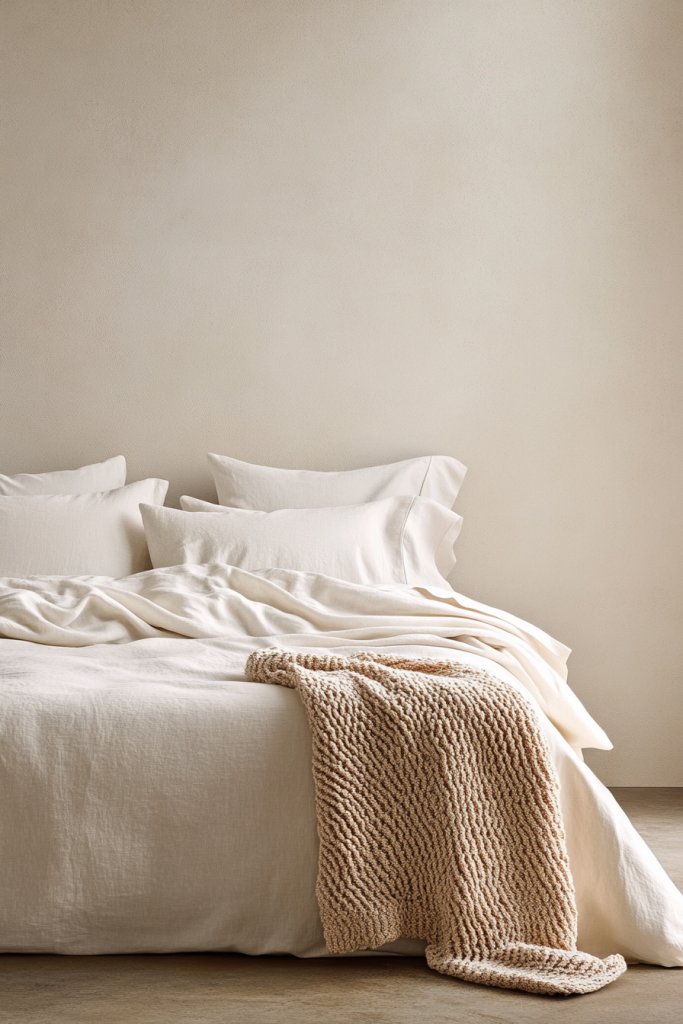
Cluttered beds with too many pillows or busy patterns can make your bedroom feel chaotic instead of calming. Do you long for a simple, inviting bed that feels restful? Going minimalist with your bedding can instantly create a serene sanctuary where you want to unwind each night.
Envision a bed dressed in crisp, solid-colored sheets—think soft white, muted beige, or gentle greys—made from natural fabrics like linen or cotton. A single textured throw, perhaps in a chunky knit or subtle embroidery, adds depth without overwhelming. The absence of busy patterns makes the bed the room’s calming focal point, inviting you to relax and breathe.
Choose bedding in neutral tones for a timeless look, or experiment with slight color variations for subtle interest. Seasonally, swap lightweight linens for warmer, textured fabrics in winter—like flannel or brushed cotton. Incorporate different textures—smooth sateen, matte cotton, or tactile linen—to add visual interest while keeping the overall look simple. Layering with a textured blanket can also provide cozy warmth.
Start with high-quality, natural-fiber sheets in a neutral hue. Keep patterns minimal—solid colors or very subtle stripes or weaves work best. Add a textured duvet cover or a chunky knit blanket for tactile contrast. Use minimal decorative pillows—just one or two in coordinating tones. Wash and maintain your bedding regularly for freshness and longevity. Keep accessories like throws simple and understated.
Personalize your bedding with embroidered initials or subtle piping details. Opt for organic or eco-friendly fabrics to align with a natural aesthetic. Incorporate a mix of textures—smooth, nubby, or quilted—for visual depth. Keep decoration minimal but meaningful—perhaps a handcrafted pillow or a unique textile accent that tells your story.
Minimalist bedding creates a clutter-free, restful environment that promotes better sleep. It’s a timeless approach that pairs well with any room style. Once you adopt this look, you’ll find it easier to keep your space tidy and inviting. Less truly is more when it comes to creating calm and comfort.
2. Seamless Wall Finishes with No Visible Hardware
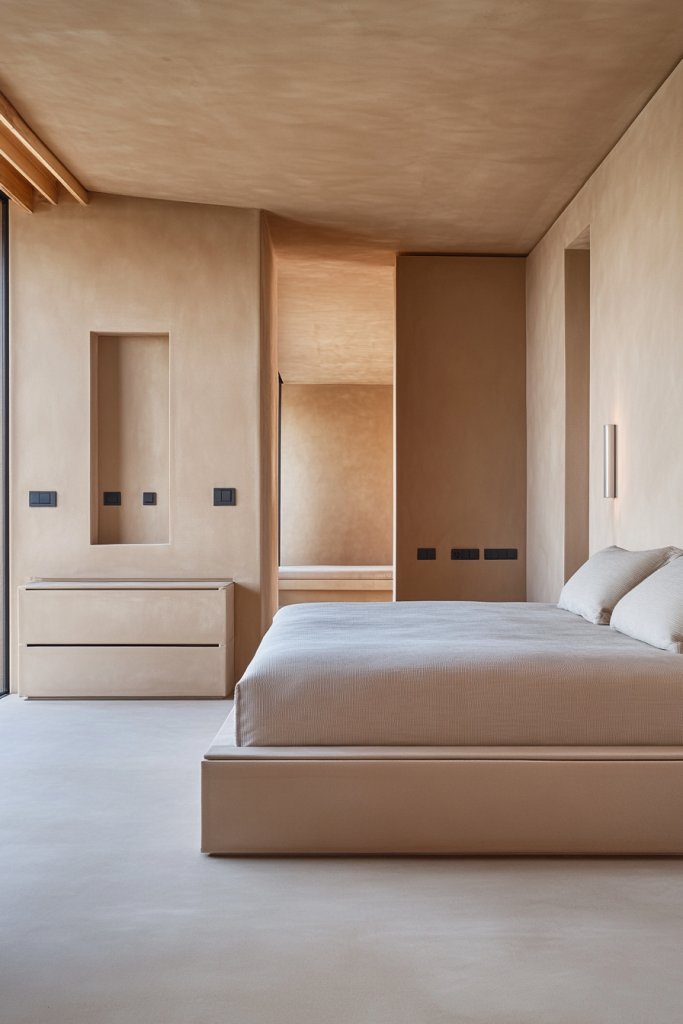
Ever notice how visible handles, switches, or textured wall surfaces can distract from a clean, minimal aesthetic? Want your walls and fixtures to blend effortlessly into your space? Seamless finishes and hidden hardware are your secret weapons to achieving that ultra-modern, clutter-free look.
Imagine walls painted with a flawless matte finish that feels velvety to the touch, with no visible seams or hardware. Switches and outlets are flush-mounted, painted to match the wall—disappearing into the background. Furniture features handleless drawers and push-to-open mechanisms, creating uninterrupted surfaces that seem to float in space. The overall effect is a sleek, cohesive environment that breathes simplicity.
This approach suits any decor style—from ultra-modern to Scandinavian minimalism. In small rooms, seamless finishes amplify the sense of space and light. For larger rooms, they create a calming, uniform backdrop that allows other design elements to stand out. Use textured wall finishes or subtle color shifts to add depth without cluttering visual field.
Choose high-quality paint with matte or eggshell finish for walls. Work with painters to ensure flawless application—multiple coats and proper prep are key. Select furniture with handleless drawers or push-open systems, and install concealed hardware where possible. Use wall-mounted switches and outlets with matching covers, and paint over them for a true seamless look. Regular cleaning maintains the smooth surface.
Add textured wall panels or subtle geometric patterns to create visual interest without hardware. Use color-matched or tone-on-tone schemes for fixtures and furniture. Experiment with matte or metallic finishes on hardware for a sophisticated touch, or opt for invisible hinges and pulls. Keep decor minimal to let the finishes shine.
A seamless finish elevates your bedroom into a modern sanctuary of calm. It’s a design choice that signals sophistication and intentionality. Once you see how effortless and sleek your space looks, you’ll be inspired to extend this minimal ethos throughout your home. It’s about creating a space that feels both elegant and effortless.
3. Multi-Functional Furniture for Efficient Utilization
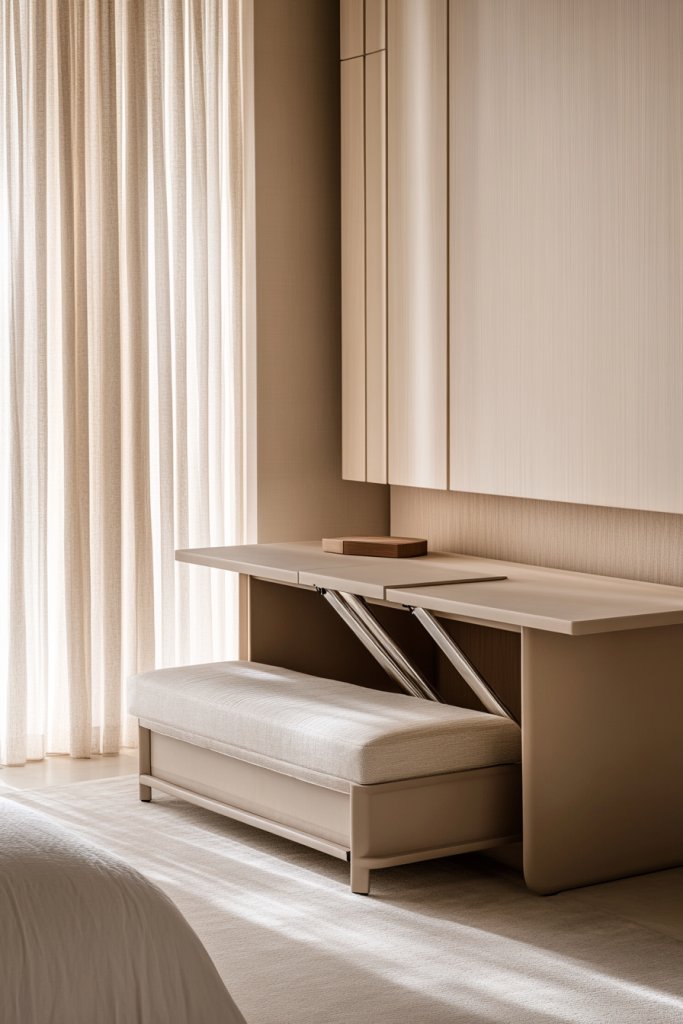
Does your bedroom feel cluttered because your furniture does too much or not enough? Struggling to find a balance between style and practicality? Multi-functional furniture solves this dilemma by combining two or more uses into one sleek piece. It’s perfect for maximizing space without sacrificing aesthetic appeal.
Picture a stylish bench at the foot of your bed with hidden storage inside, perfect for stashing extra linens or shoes. Or a fold-down desk that doubles as a vanity, seamlessly blending into the room when not in use. These pieces are crafted with clean lines, in neutral finishes, and integrate effortlessly into minimalist decor. The result: a clutter-free, versatile space that adapts to your needs.
Choose pieces based on your primary needs—storage, workspace, seating—and match them to your room’s style. In small apartments, opt for fold-away beds or wall-mounted desks that tuck away when not needed. In larger rooms, consider multi-drawer storage beds or modular seating that can be reconfigured. Seasonal or lifestyle changes are easy with versatile furniture.
Start by analyzing your daily routines and clutter hotspots. Look for furniture with built-in storage compartments, fold-out surfaces, or convertible designs. Use high-quality hinges and durable mechanisms for longevity. Measure your space carefully to ensure everything fits comfortably and allows free movement. Installing multi-purpose furniture might require some DIY skills or professional help, but it’s worth the effort.
Add personal touches like textured cushions or decorative trims to your multi-functional pieces. Use removable covers for easy cleaning and seasonal updates. Incorporate subtle lighting or small shelves on multi-use furniture for added functionality. The goal is to make each piece serve your lifestyle while maintaining a minimalist aesthetic.
Multi-functional furniture is about smarter living, not sacrificing style. It can transform a cluttered mess into a sleek, efficient retreat. Once you experience how these pieces streamline your space, you’ll be motivated to design a home that works with you. It’s a practical, stylish solution for modern living.
4. Hidden Cord Management for a Tidy Look
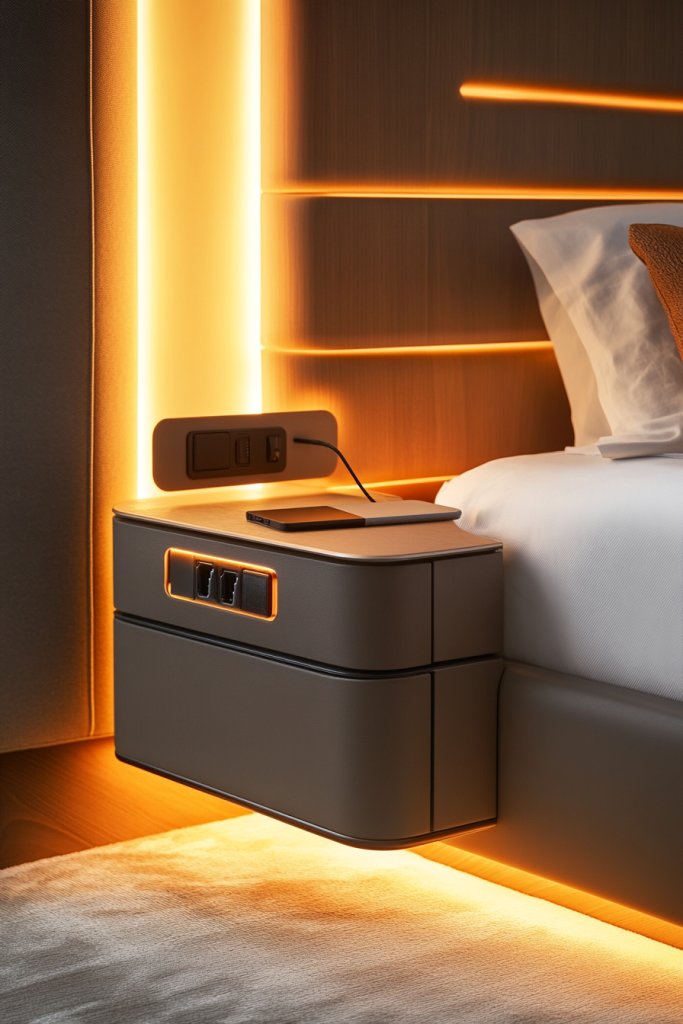
Tangled cords and visible cables make even the most stylish bedroom look messy. Do you want a clean, clutter-free space where electronics don’t dominate the visual field? Hidden cord management is the simple trick that keeps your space looking polished and serene.
Imagine a sleek bedside area where chargers are concealed behind furniture panels, with only minimal wires visible. Power strips are hidden inside furniture or routed through wall cavities, leaving only your device cords visible. Soft LED lighting is integrated into furniture edges, casting a warm glow without visible wires. The overall scene is a calm, organized sanctuary free of cable clutter.
Use cable conduits, raceways, or wall channels to hide wires in any decor style. Choose furniture with built-in cable management features—like grommets or concealed compartments. In rental spaces, adhesive cable clips or fabric sleeves work well for quick fixes. For tech-heavy bedrooms, plan outlets strategically for minimal cord exposure, and consider wireless charging pads for a tidy, cable-free surface.
Start by unplugging and sorting your cords. Use cable sleeves or clips to bundle wires, and route them through designated channels or furniture cavities. Mount power strips inside furniture pieces or behind walls. Use furniture with built-in grommets or cutouts to pass cords discreetly. Always prioritize safety—avoid overloading outlets and secure cables properly to prevent tripping hazards. Regularly check and tidy cords to maintain the look.
Personalize your setup with decorative cable covers or paint conduit covers to match your wall or furniture colors. Use sleek, minimal wire clips to keep cords aligned and tidy. Incorporate wireless chargers for devices, reducing the need for cords altogether. Small, decorative cord organizers can also add a personal touch while keeping things neat.
Managing cords effectively transforms your bedroom into a calm, organized retreat. It’s a quick, impactful upgrade that makes daily routines smoother and visually cleaner. Once you see your space free of tangled wires, you’ll wonder why you didn’t do it sooner. It’s all about smart, simple solutions for a clutter-free life.
5. Clutter-Free Nightstand with Essential-Only Items
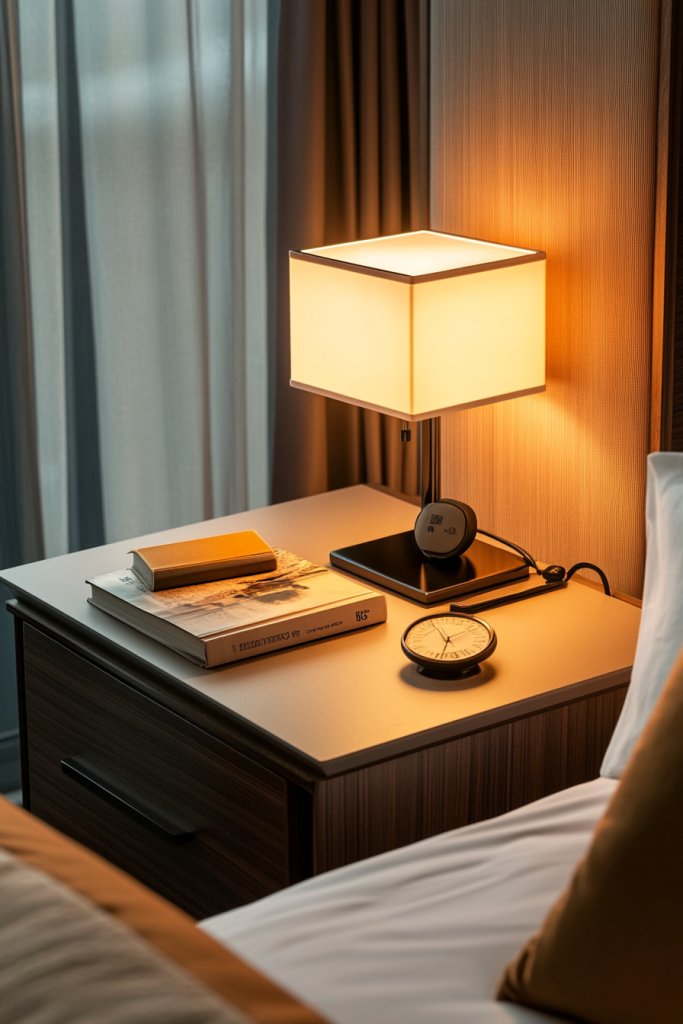
Nightstands often turn into catch-alls for clutter—books, chargers, lotions, and random knickknacks. Does your bedside table look like a junk drawer? A clutter-free nightstand focuses only on essentials, creating a peaceful start and end to your day.
Picture a sleek, minimalist nightstand with a smooth surface—no clutter, no distractions. A simple, modern lamp, a small clock, and perhaps a single favorite book rest neatly, with space to breathe. The clean surface reflects natural light, making your whole bedroom feel brighter and more organized. It’s essentially a visual breath of fresh air.
Choose a nightstand with concealed drawers or open shelving depending on your storage needs. In small bedrooms, keep the top clear and use wall-mounted lighting to free up space. In larger rooms, add a small tray or decorative box to organize tiny items while maintaining minimalism. Seasonal or personal updates can be as simple as switching out a cozy cover or a small decorative object.
Start by clearing your current nightstand and assessing what you truly need overnight. Limit yourself to a lamp, a clock, and one meaningful object. Use trays or small containers for loose items like jewelry or chargers, keeping surfaces tidy. Opt for furniture with hidden storage compartments or drawers to hide away less-used items. Regularly tidy to maintain the minimalist look.
Personalize with textured trays, soft fabric covers, or a minimalist clock that matches your decor. Consider adding a small, sculptural piece or a decorative dish to hold jewelry or keys. Keep everything within reach but hidden from sight when not in use. The goal is functional simplicity with a touch of style.
A clutter-free nightstand sets the tone for a calm, organized bedroom. It encourages intentional living and reduces morning and evening stress. Once you master this simple setup, maintaining a peaceful space becomes effortless. It’s a small change that makes a big difference in your daily routine.
6. Clear, Uncluttered Window Treatments
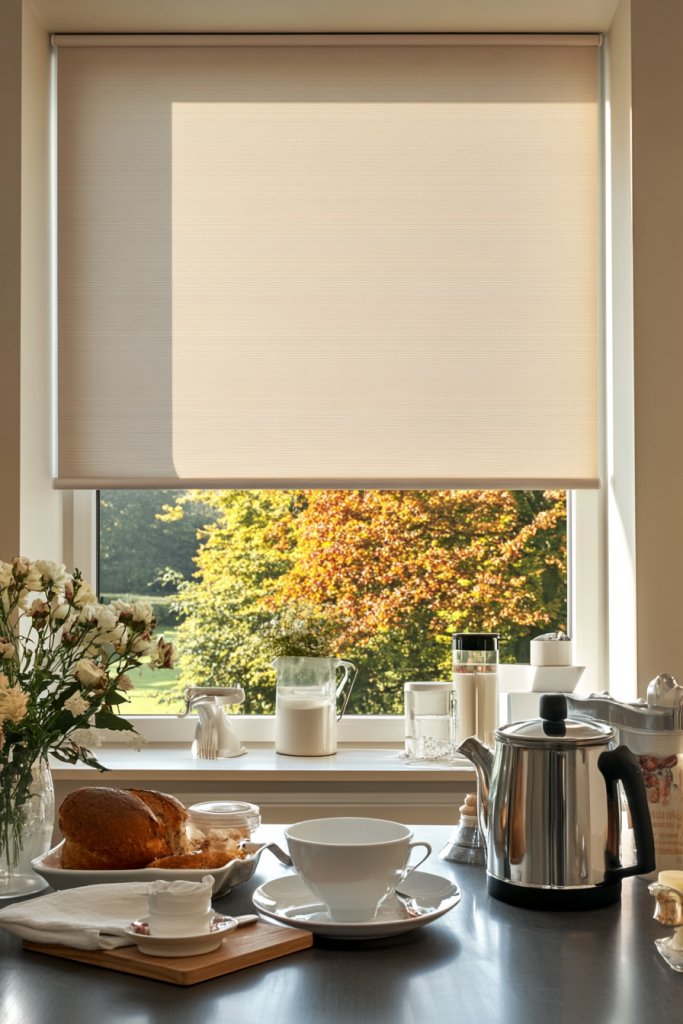
Heavy drapes and layered curtains can make your windows look busy and your room feel cramped. Do you want a simple, clean window treatment that lets in natural light and keeps your space feeling open? Clear, unobtrusive window coverings are the key to minimalist elegance.
Picture sleek roller blinds in neutral tones, smoothly rolled up to reveal your view or softly closed for privacy. The fabric is plain, with no frills or embellishments, creating a seamless look that blends into the wall. When open, the window frame becomes a clean architectural element, not a visual distraction. Natural light floods the room, making it feel airy and bright.
Opt for plain roller shades, cellular blinds, or simple linen curtains depending on your style preference. In rooms with large windows, consider layered treatments for versatility—such as sheer panels underneath blackout shades. For a different aesthetic, choose minimalistic, track-mounted curtains that slide smoothly without fuss. Seasonal adjustments are easy by changing fabrics or colors to match your decor.
Measure your windows carefully to select the right size and type of treatment. Install a sleek, unobtrusive track or roller mechanism that allows for smooth operation. Use neutral tones to keep the look clean and versatile. When hanging curtains, keep hardware minimal—prefer flush-mounted or concealed brackets. Regular cleaning keeps treatments looking fresh and free of dust.
Add subtle texture with fabric choices like linen or sheer voile in soft neutrals. Consider motorized options for effortless operation and a high-tech feel. Keep window sills clear or decorate with simple, functional accessories like a small clock or a decorative box. The goal is to enhance privacy and light control without adding visual clutter.
Clear window treatments maximize natural light and create a calm, uncluttered environment. They’re a simple fix that immediately elevates your room’s aesthetic. Once you see how much brighter and more spacious your space feels, you’ll be motivated to keep other design elements minimal and intentional. Light, bright, and clutter-free—that’s the vibe.
7. Use of Open Shelving with Minimal Items
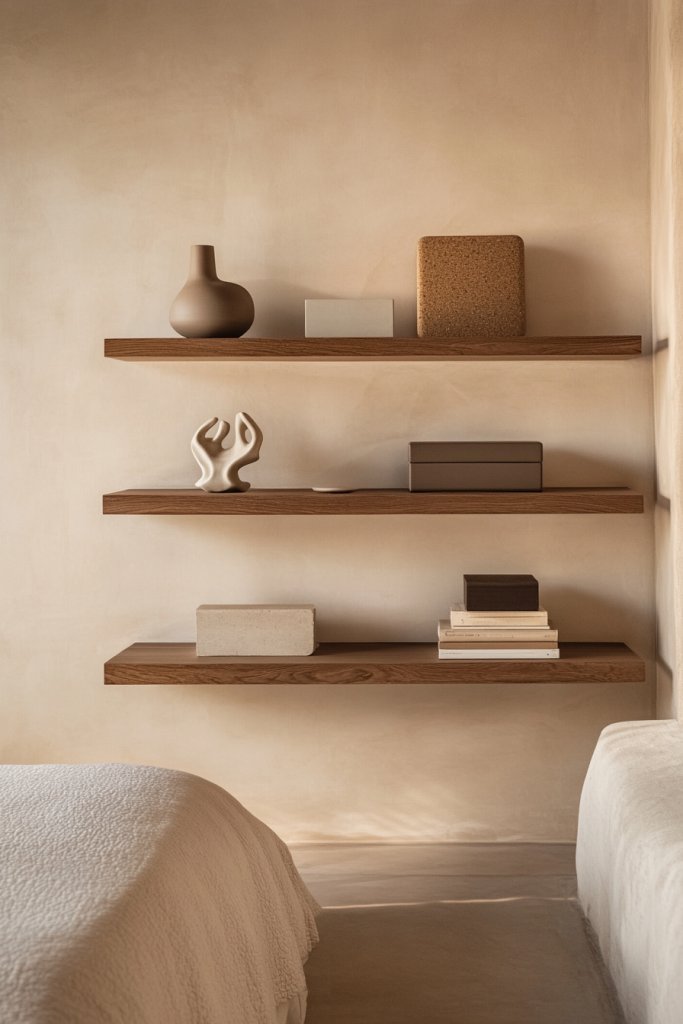
Cluttered surfaces and crowded shelves can ruin a minimalist vibe. Do you want a way to display your favorite essentials without overwhelming your space? Open shelving with carefully curated items keeps your room feeling open and organized.
Visualize slim, wall-mounted shelves in neutral finishes, holding a few select decorative objects, functional baskets, or neatly folded textiles. Keep items to a minimum—perhaps a sculptural ceramic piece, a sleek box, or a few books in subdued tones. The open design invites your eye to breathe, creating a balanced, curated look that’s both functional and beautiful.
In small rooms, choose floating shelves that don’t protrude much and keep the number of items minimal. In larger spaces, stagger shelves at different heights for visual interest. Use a mix of open and closed storage to hide less attractive items without cluttering your aesthetic. Seasonal or style shifts can be handled easily by swapping decor or rearranging objects.
Select sturdy, minimal brackets and slim shelves in materials like wood, metal, or acrylic. Install at eye level or higher for a floating effect, ensuring they are anchored into studs for safety. Keep the display simple—avoid overloading shelves to maintain a clean look. Regularly dust and rotate items to keep the display fresh and intentional.
Add personal flair with textured objects, monochrome vases, or minimalist art pieces on the shelves. Incorporate functional items like a sleek clock or a decorative tray, but keep clutter to a minimum. Use lighting—like small LED spotlights—to highlight key pieces without adding visual clutter.
Open shelving with minimal items showcases your style while keeping clutter out of sight. It encourages mindful curation and creates a calm, organized space. Once you master this balance, your room will feel both sophisticated and welcoming. It’s a simple way to keep your decor fresh and functional.
8. Minimalist Closet Doors and Wardrobes
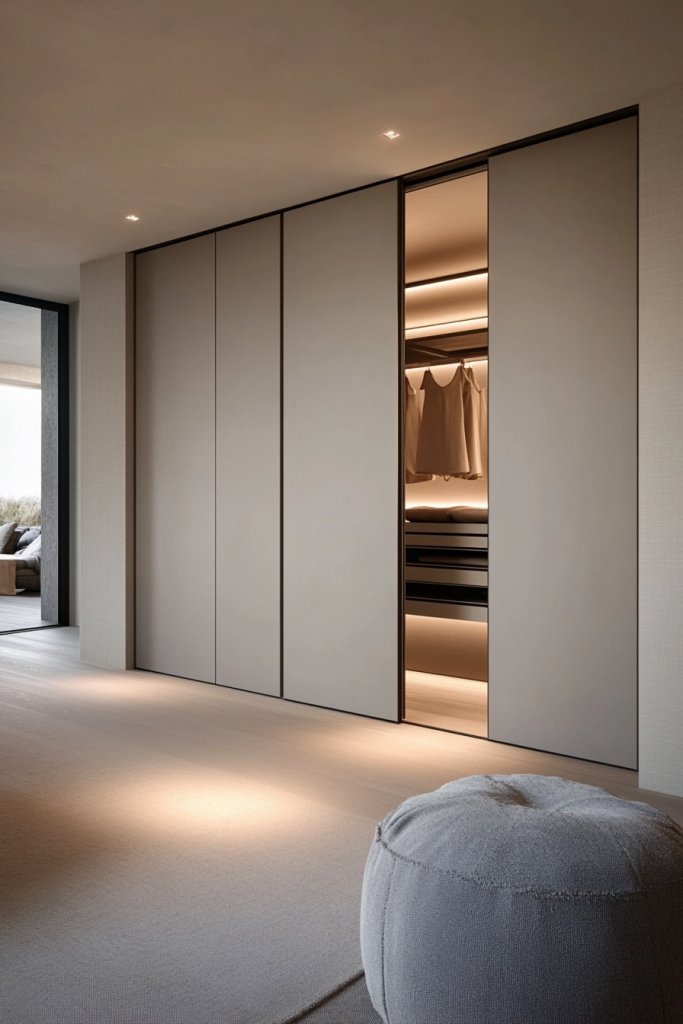
Cluttered, bulky closet doors can make a bedroom look chaotic and crowded. Are you after sleek, streamlined storage that keeps your space feeling calm? Minimalist closet doors—like handleless sliders or flush-mounted units—are your ticket to a clean, cohesive look.
Envision sliding doors with a smooth, handleless surface in matte or glossy finishes, blending seamlessly into the wall. When closed, they create a uniform facade that hides a cluttered closet. When open, the space inside remains organized and functional, with minimal hardware and no visual distraction. The effect is a polished, clutter-free environment that feels spacious.
Choose between sleek sliding, pocket, or flush-mounted doors depending on your space constraints and aesthetic preferences. For larger closets, consider multiple panels with subtle joints for a clean look. For a softer, more natural feel, opt for wood finishes or painted surfaces matching your walls. Seasonal updates can be achieved by swapping out door panels or finishes.
Measure your closet opening carefully and select a door system suitable for your space. Install tracks or hinges with precision, ensuring smooth operation and alignment. Use minimal hardware—push-to-open mechanisms or concealed handles—to maintain the seamless look. Keep the interior organized with built-in shelves, baskets, or hanging organizers that remain hidden when doors are closed. Regular maintenance ensures smooth sliding or opening.
Add subtle texture with matte or satin finishes, or incorporate minimalist etched patterns. Consider interior lighting or full-length mirrors integrated into the doors for added functionality. Keep the exterior simple, focusing on clean lines and uniform colors that blend with your room’s palette. The goal: a closet that hides clutter while enhancing your decor.
Sleek closet doors elevate your bedroom’s aesthetic and simplify daily routines. They inspire a lifestyle of organization and minimalism, making your space feel larger and more serene. Once you see how a simple update can change everything, you’ll be motivated to extend the minimal theme throughout your home. Style and function, perfectly combined.
9. Light-Reflecting Surfaces to Enhance Brightness
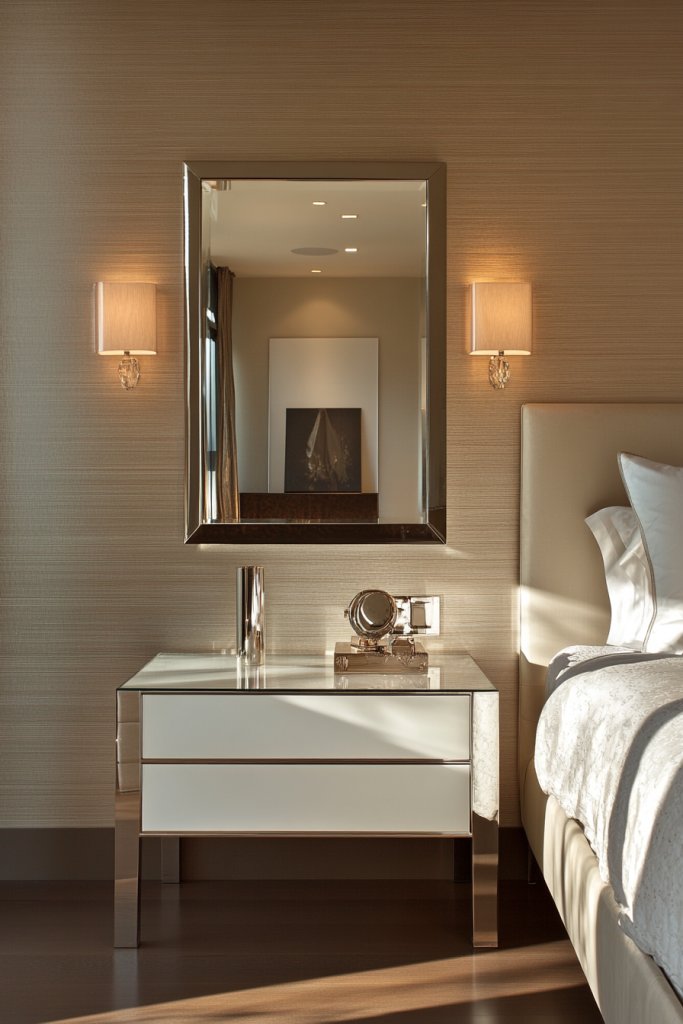
Rooms that lack natural light or feel dull can dampen your mood and make your space seem smaller. Want to amplify brightness and create a luminous, airy atmosphere? Light-reflecting surfaces are your secret weapon for a fresh, vibrant bedroom.
Imagine glossy, lacquered furniture, metallic fixtures, or high-shine accents that bounce light around the room. Mirrors with sleek, frameless designs reflect both natural and artificial light, expanding the space visually. Metallic or glass surfaces on side tables or decorative elements add a subtle shimmer, brightening even the darkest corners. The overall effect feels open, clean, and energizing.
Use high-gloss finishes on furniture or cabinetry to reflect light. Incorporate large mirrors strategically placed to maximize light bouncing. Metallic accents—like chrome or brushed brass—add depth and a modern touch. In spaces with limited windows, focus on reflective surfaces and layered lighting to compensate for the lack of natural light.
Select furniture and accessories with glossy or metallic finishes—think lacquered dressers, reflective side tables, or metallic hardware. Position mirrors opposite windows or light sources to amplify brightness. Consider glass or acrylic surfaces for a transparent, light-catching effect. Regular cleaning enhances reflectivity, especially on glossy surfaces. Balance shiny elements with matte textures to avoid overwhelming the room.
Add decorative metallic objects or textured glass pieces for subtle elegance. Use mirrored trays or metallic picture frames to tie the look together. Incorporate lighting fixtures with reflective surfaces or metallic finishes to boost illumination. Personalize with unique, shiny accents that reflect your personality within the minimal aesthetic.
Bright, reflective surfaces make your bedroom feel larger and more inviting. They create a sense of openness and vitality that’s hard to achieve otherwise. Once you experience the difference, you’ll be inspired to incorporate more reflective design elements. It’s about making your space feel alive with light and energy.
10. Simple, Functional Decor Accessories
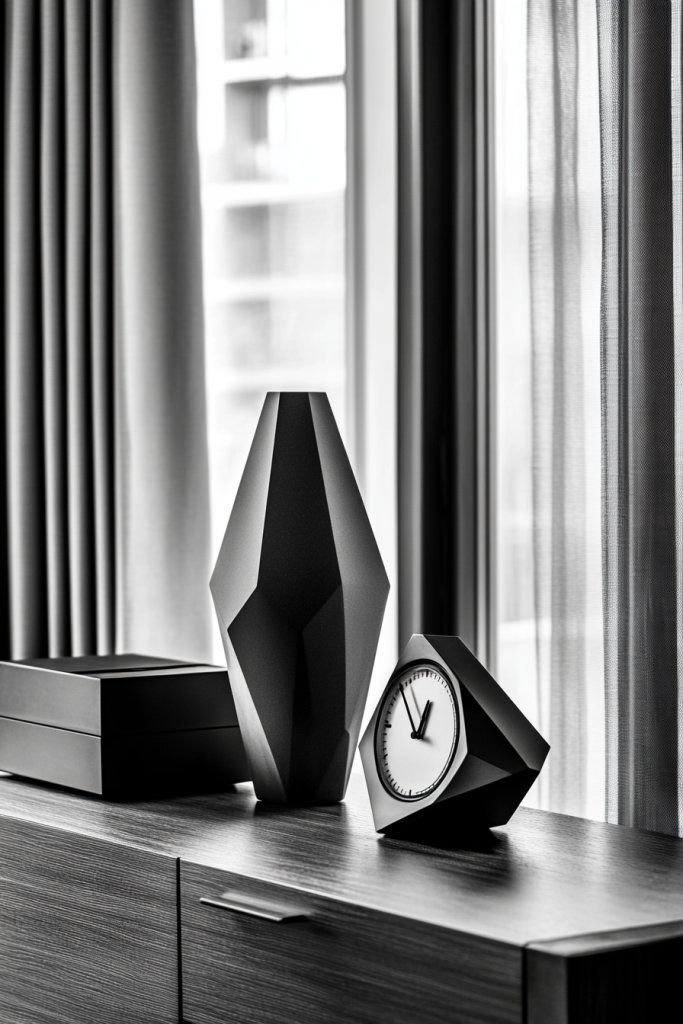
Decor items can easily turn cluttered and chaotic, defeating the purpose of a minimalist bedroom. Do you want accessories that add function and subtle style without crowding your space? Choosing simple, functional decor keeps your room clean, calm, and practical.
Picture a sleek, monochrome geometric vase, a minimal clock with a clean face, or a sculptural storage box—each serving a purpose while elevating your decor. These items sit neatly on shelves or dressers, adding subtle visual interest. They don’t dominate but instead complement the overall aesthetic. The room feels curated, calm, and cohesive.
Opt for decor that’s both pretty and practical—like a stylish tray for jewelry or a geometric sculpture that doubles as a paperweight. Stick to a neutral or monochrome palette to maintain harmony. Seasonal updates can involve swapping out small accessories or changing textures—think smooth ceramics for winter or matte finishes for summer. Keep clutter minimal and meaningful.
Choose accessories with clean lines and understated designs—metal, matte ceramics, or simple woods. Use trays or small containers to organize small items and prevent visual clutter. Position decorative objects thoughtfully—perhaps on floating shelves or atop a dresser—so they enhance rather than clutter. Regularly review and edit your accessories to keep the look fresh and intentional.
Personalize with meaningful objects—like a handcrafted piece or a favorite book in a simple cover. Use textured or matte finishes to add depth without visual noise. Incorporate multi-purpose pieces, such as a decorative box that also stores essentials. The aim is thoughtful, cohesive decor that enriches your space without overwhelming it.
Functional decor accessories prove that less is more. They help you create a space that’s both beautiful and practical. Once you realize how simple, thoughtful touches elevate your room, you’ll be inspired to maintain a minimalist, clutter-free environment. It’s all about style, purpose, and peace of mind.
11. Neutral, Matte Finishes for a Soft Touch
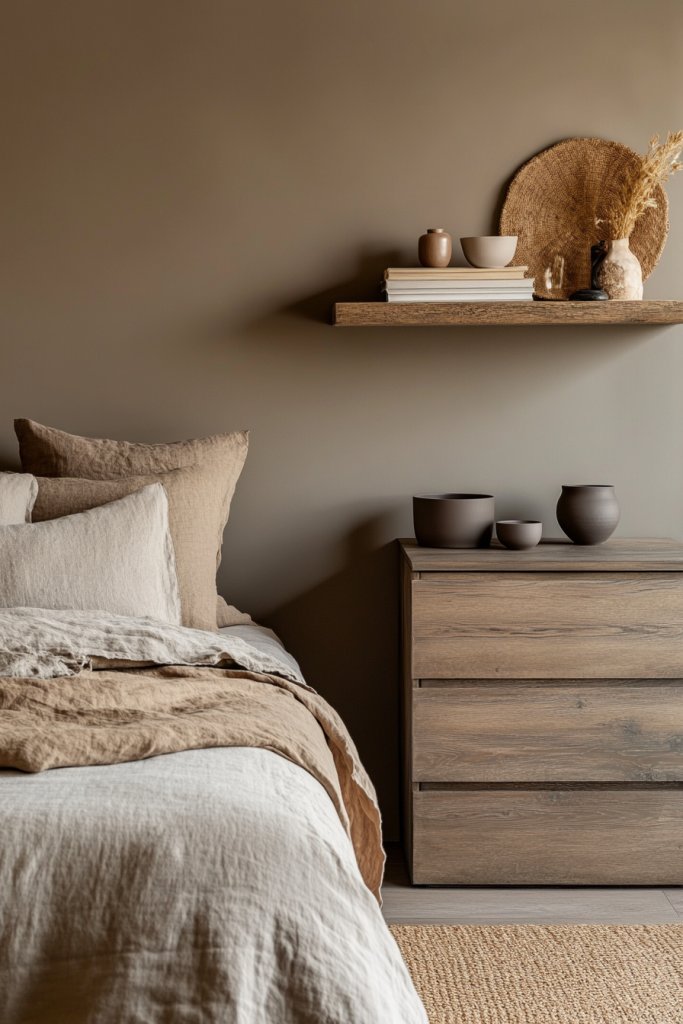
Glossy surfaces and shiny finishes can sometimes make a space feel cold or overwhelming. Do you want a softer, more inviting atmosphere? Neutral matte finishes on walls, furniture, and accessories create a calm, understated elegance that invites relaxation.
Envision matte-painted walls in warm taupe or soft grey, with furniture finished in matte wood or paint. The lack of glare creates a cozy, velvety feel that’s easy on the eyes. Textured fabrics and matte ceramics complement this look, adding depth without shine. The room’s overall glow is gentle, soothing, and sophisticated.
Use matte paint on walls and furniture for a unified soft look. Combine with textured textiles—like linen or wool—to enhance the tactile experience. In colder months, layer with plush throws or matte-finish rugs to add warmth. For a touch of luxury, incorporate matte metallic accents in fixtures or decor pieces.
Select matte paints in neutral tones and apply evenly after proper prep. Choose furniture in matte finishes—think painted wood or powder-coated metals. Use textured fabrics for bedding, curtains, or upholstery. Avoid glossy surfaces that reflect light and disrupt the soft aesthetic. Regular cleaning prevents dust from dulling the matte finish.
Add tactile interest with textured textiles—think boucle, woven, or nubby fabrics. Incorporate subtle matte metallic fixtures for a sophisticated touch. Personalize with handcrafted ceramics or textiles that echo the room’s soft tones. Keep decor minimal to preserve the serene, matte vibe.
Neutral matte finishes create a timeless, peaceful environment that’s easy to update. They promote a sense of calm and sophistication, making your bedroom a true retreat. Once you embrace the soft, muted aesthetic, maintaining a clutter-free, restful space becomes second nature. Less glare, more serenity—that’s the goal.
12. Open Floor Space Enhancing a Sense of Calm
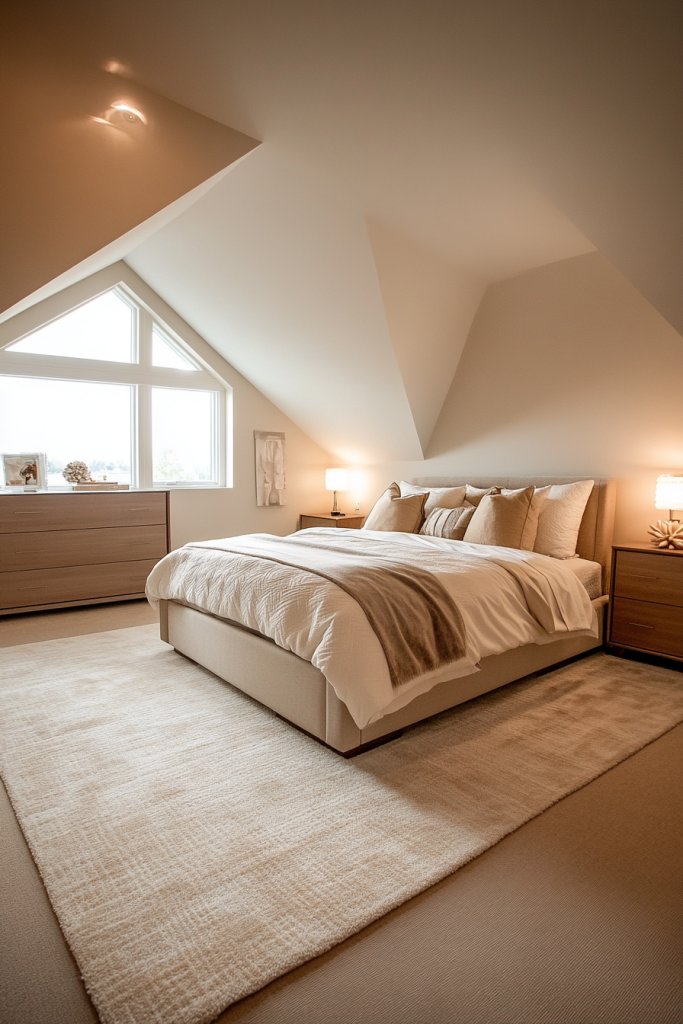
A crowded, cluttered room can feel stressful and overwhelming. Do you crave a peaceful retreat with plenty of breathing room? Clearing open space in your bedroom fosters calm, clarity, and a sense of spaciousness that’s hard to beat.
Imagine a room with minimal furniture—just a bed, a small dresser, and a few carefully chosen pieces—leaving plenty of open floor. The uncluttered space invites your eye to relax and focus, while natural light floods in, bouncing off the clean surfaces. The overall vibe is tranquil and effortless, like a boutique hotel suite designed for peace.
Arrange furniture to maximize open space—push beds against walls, use slim-profile pieces, and avoid crowding corners. In small rooms, keep only essential furniture and skip bulky items like armoires or oversized dressers. In larger rooms, create zones with minimal furniture to encourage movement and flow. Seasonal adjustments involve swapping out large pieces for smaller, more streamlined options.
Start by decluttering your room, removing anything unnecessary or oversized. Choose furniture with slim profiles and minimal ornamentation. Position your bed and storage pieces to leave central pathways open. Use multi-purpose furniture—like beds with hidden drawers or fold-away desks—to save space. Regular tidying ensures the space remains open and inviting.
Introduce a few statement pieces—like a sculptural chair or textured rug—in neutral tones to add interest without clutter. Use vertical storage solutions to keep surfaces clear. Keep the decor minimal—avoid excessive accessories—and let the open space do the work. Natural elements like textiles and light colors enhance the calming effect.
Open floor plans cultivate a sense of peace and freedom in your bedroom. They reduce visual noise and promote relaxation. Once you experience the tranquility of uncluttered space, you’ll be motivated to keep other areas minimal. It’s all about creating a sanctuary that truly feels like a retreat from chaos.
Conclusion
From sleek furniture arrangements to clever storage solutions and calming color schemes, this collection of minimal bedroom ideas offers plenty of inspiration to suit any style. Implementing even a few of these concepts can dramatically enhance your space’s tranquility and functionality. Don’t hesitate—embrace the simplicity and start creating your perfect minimalist retreat today!
Leave a Reply